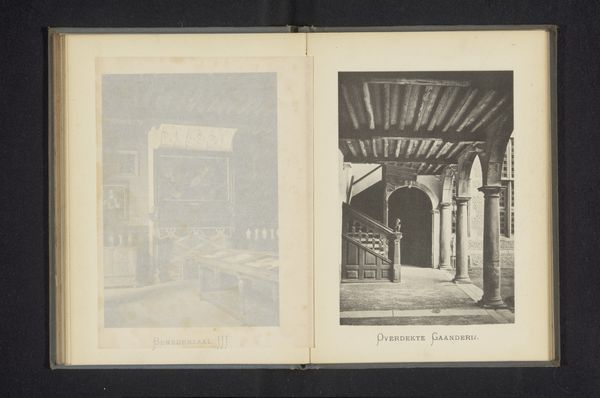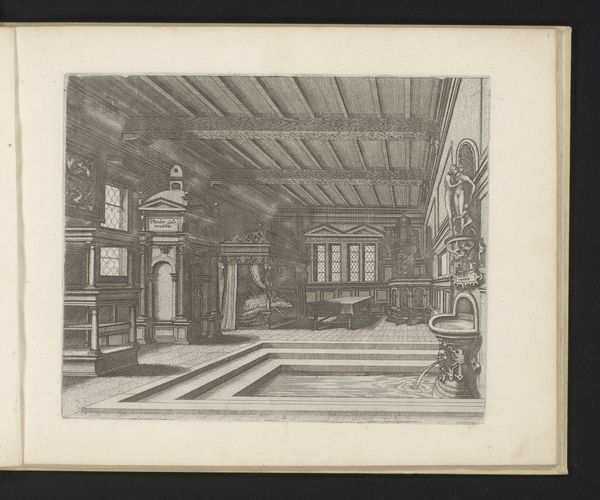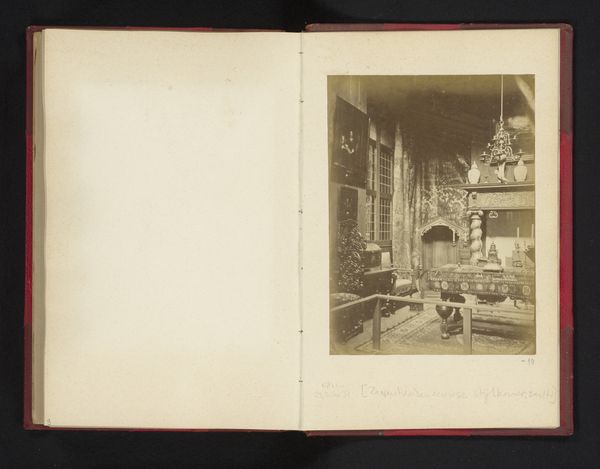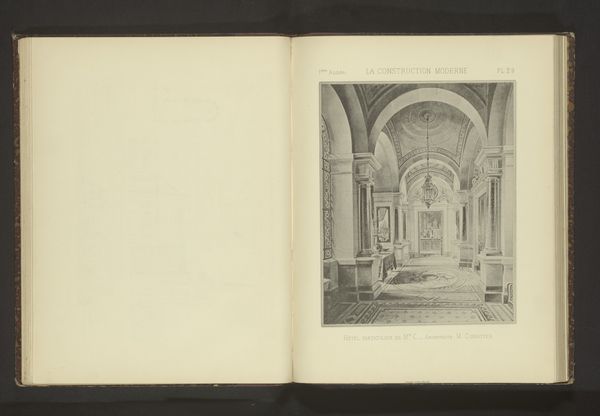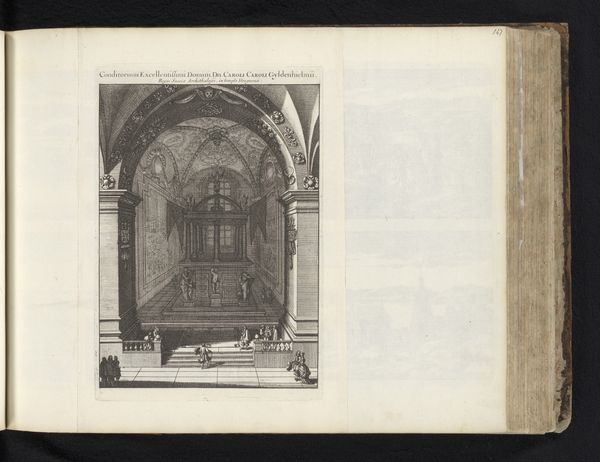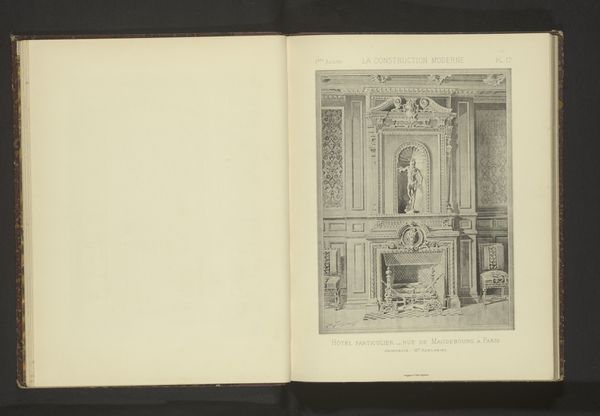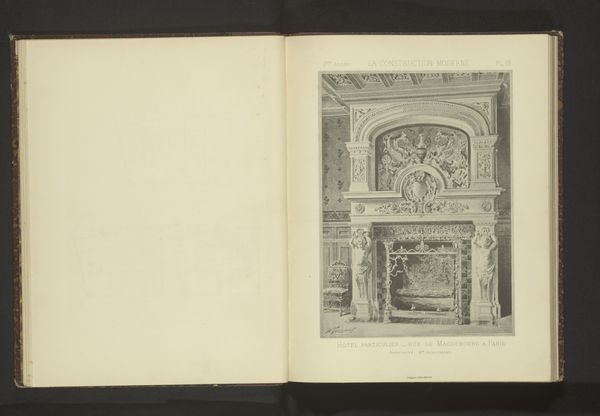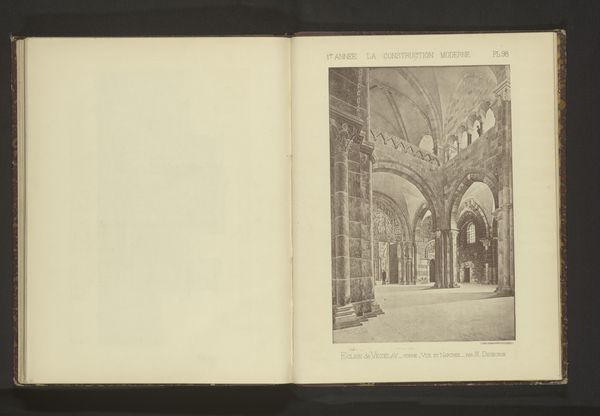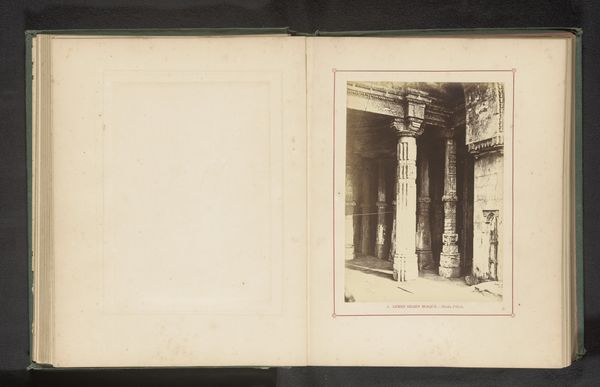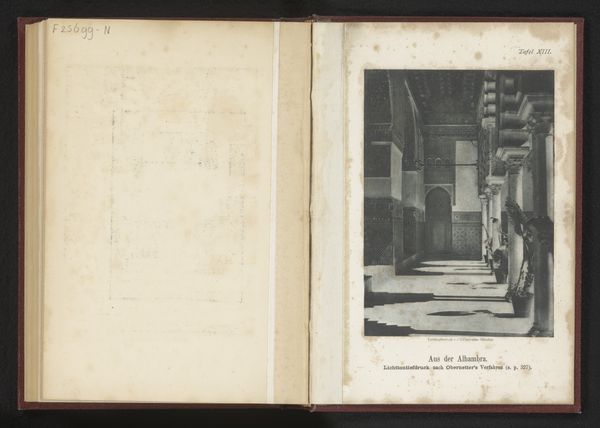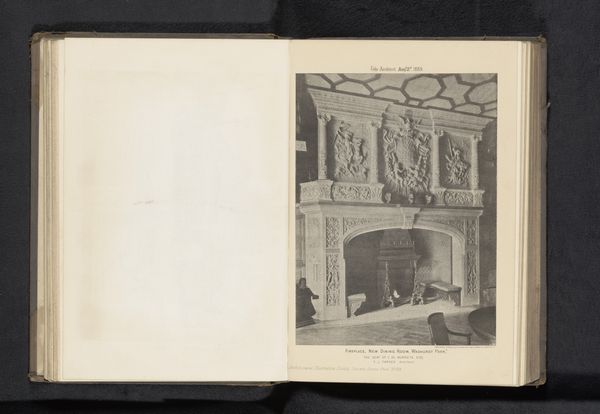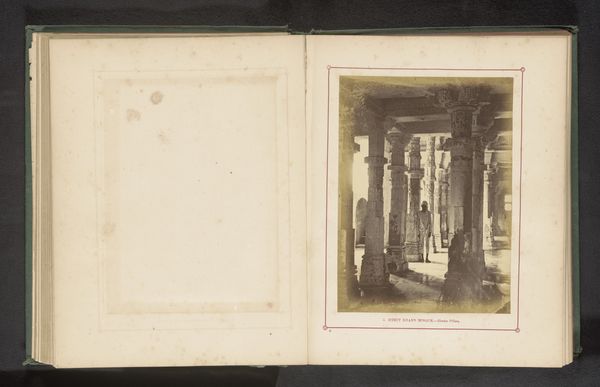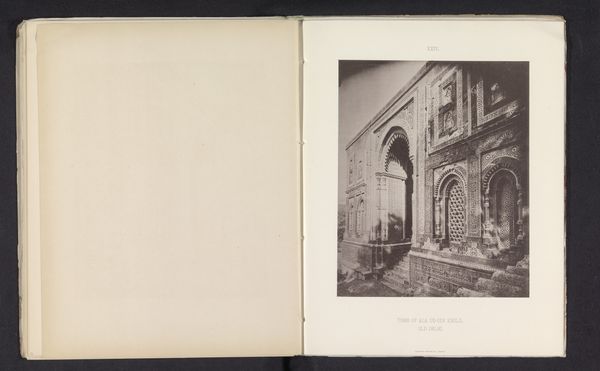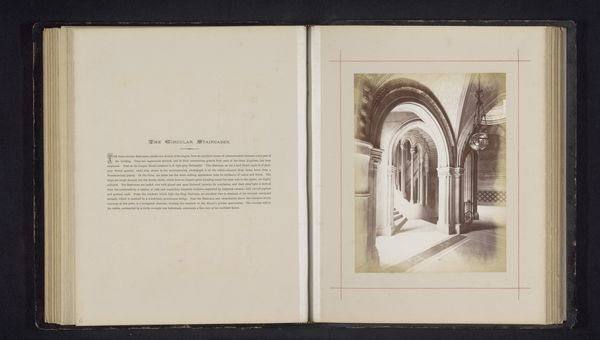
print, photography
# print
#
photography
#
genre-painting
Dimensions: height 160 mm, width 110 mm
Copyright: Rijks Museum: Open Domain
Curator: This print, possibly a photograph, presents us with an "Interieur van de benedenzaal van het huis van Christoffel Plantijn," or "Interior of the lower hall of the house of Christoffel Plantijn," made sometime before 1886 by Joseph Maes. Editor: Immediately, it evokes a sense of quiet industry... like, you can almost hear the gentle scrape of a quill and the turning of heavy paper. But there's also a certain melancholy to it. The black and white lends this kind of aged, bygone atmosphere. Curator: The image indeed captures not only the interior's aesthetic but also evokes the weight of Plantijn’s legacy. Consider the historical context: Plantijn was a pivotal printer and publisher of the 16th century, and his house was more than just a residence, it was the hub of an immense intellectual and cultural endeavor. The "lower hall," functions here, possibly, as the nucleus of Plantijn’s print operations. Editor: See how the eye is drawn to that enormous painting above the fireplace? I wonder what's depicted? Whatever it is, it looms large, suggesting both wealth and, perhaps, a kind of patriarchal presence. It's as if the spirit of art directs the commercial processes in the house. Curator: Yes! And those objects displayed on the table? Presumably printed works, or tools of the trade. Examining them through a contemporary lens, we might ask: who had access to this space? Whose voices and labor are absent from this image, but were vital to Plantijn's success? What were the social conditions that made such a printing empire possible? Editor: Hmmm. You can almost touch that era—the texture, the light filtering in… Though, that begs the question: is there an absence implied through its photographic capture? Maybe its cold tonalities are not somber—maybe they signal that time has altered and that a legacy lives only in documentation. Curator: Absolutely. It serves as a tangible anchor. It reminds us that our present is built upon layers of history, successes, silences, and social power dynamics that continue to resonate in the modern world. Editor: Looking at this image stirs an unusual melancholy. Almost like meeting an ancestor, briefly glimpsed. It also suggests that objects carry both the burdens and delights of memory... And somehow, their images have powers of their own.
Comments
No comments
Be the first to comment and join the conversation on the ultimate creative platform.
